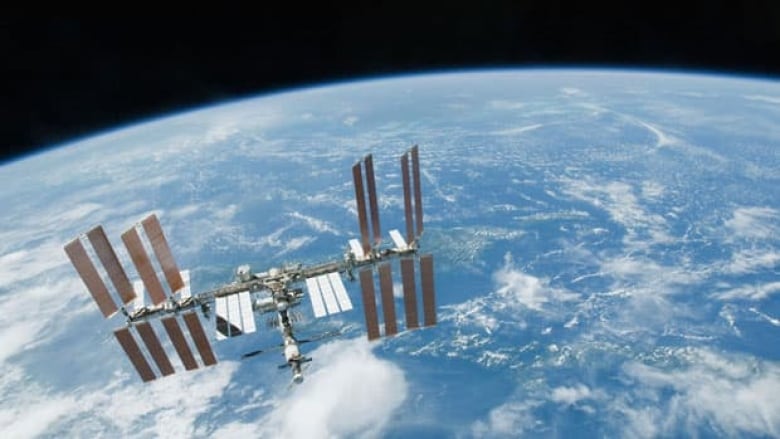How to spot the International Space Station from Canada

Now that Canadian astronautChris Hadfield has embarked on a six-month missionto the International Space Station,earthlings wanting to catch a glimpse of the orbital research laboratory can easily see it if they know where to look.
Orbiting a mere 370 kilometres above the Earth, the ISS can easily be seen by the naked eye as it passes over the Earthif you know where to look.
Hadfield, along with twofellow astronauts,blasted off into spaceWednesday morning from Baikonur, Kazakhstan, aboard a Soyuz spacecraft.
According to NASA, the space station is one of the most visible man-made objects in the sky because its large surface area reflects lots of sunlight. From the ground, it looks like a steady white pinpoint of light moving slowlyjust 7.71 kilometres per secondacross the night sky.
The best time to spot the space station is near dawn or dusk, when the sky is dark but the spacecraft is still reflecting light from the setting or rising sun.
Spotting the ISS above Canada
NASA uses sophisticated computer software to track the space station's path and predict when and where it will be visible to people on the ground.
In November 2012, the agency launched a service called Spot the Station that lets users sign up to receive text message or email alerts whenever the spacecraft isvisible overhead from their location.
It also offers an online tool called Skywatch (which is currently under maintenance) to help space enthusiasts track and observe the space station as well as other satellites orbiting the Earth.
The space station's next visible pass over Toronto is on Wednesday at around 4:45 p.m. ET. People in Saskatchewan can try to catch a glimpse at around 5:20 p.m. CT. At 4:55 p.m. PT, the space station will make a visible pass over Vancouver.
According to NASA, the ISS usually appears over the western horizon and disappears over the eastern horizon in a matter of a few minutes.
While a telescope isn't practical because of the speed of the spacecraft, the agency writes on its website that a pair of field binoculars may help observers see some of the space station's structural details.












_(720p).jpg)


 OFFICIAL HD MUSIC VIDEO.jpg)
.jpg)



























































































